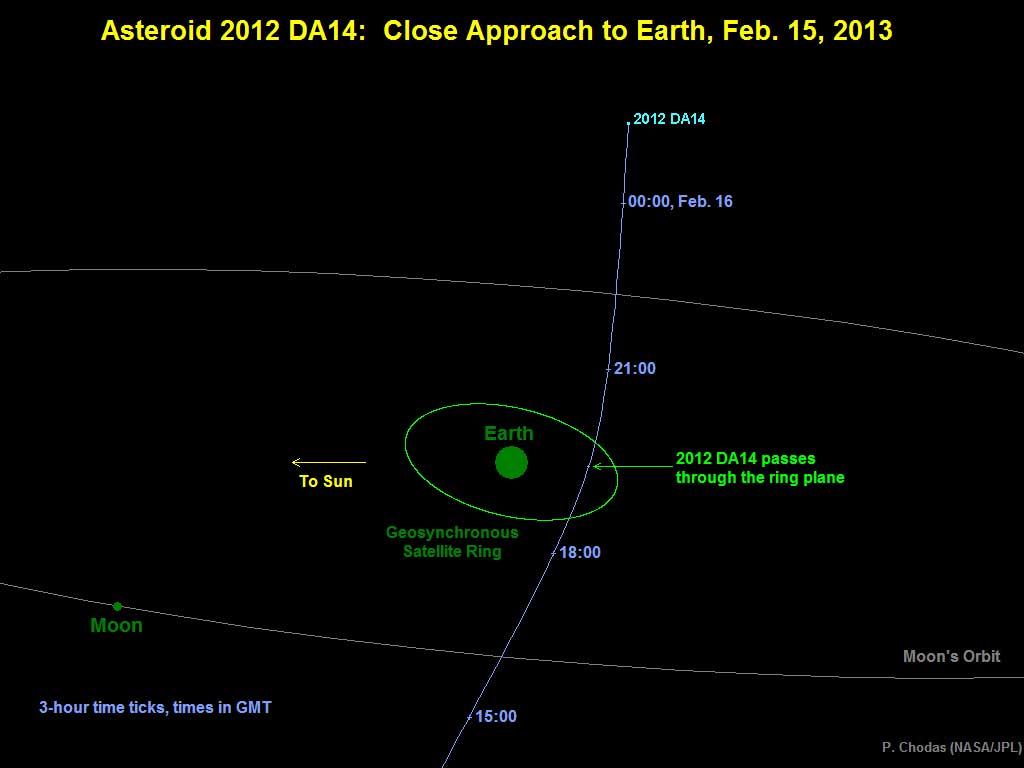Today, a near-Earth asteroid some 150 feet (45 meters) wide will make its close approach to Earth. 2012 DA
14, which Spanish amateur astronomers discovered last year, will fly past our planet closer than the orbits of most major weather and television satellites, about 17,150 miles (27,600 kilometers) above Earth’s surface. And although the asteroid will only peak at 7th magnitude and whiz across our sky so quickly that it will be difficult for most viewers to watch through binoculars, observers have a variety of choices to witness the close passage in near real time from their computers.
The above feed from NASA’s Jet Propulsion Laboratory begins at noon EST (17h UT). This coverage will feature commentary along with imagery of asteroid 2012 DA14 made available by astronomers in Australia and Europe.
NASA also will stream video from a telescope at the agency’s Marshall Space Flight Center in Huntsville, Alabama, starting at 9 p.m. EST (2h UT Feb. 16). You can watch this feed at http://ustream.tv/channel/nasa-msfc.
Astronomy Contributing Editor Bob Berman will be part of a live show covering the flyby on
Slooh.com. Coverage from two professional observatory locations, the Canary Islands off the coast of Africa as well as Arizona in the United States, will begin at 9 p.m. EST (2h UT Feb. 16).
Students also are getting involved in the streaming process. High schoolers from Dexter and Southfield schools in Brookline, Massachusetts, will use the Clay Center Observatory to track asteroid 2012 DA14 and broadcast the imagery at http://www.ustream.tv/channel/clay-center-observatory.










